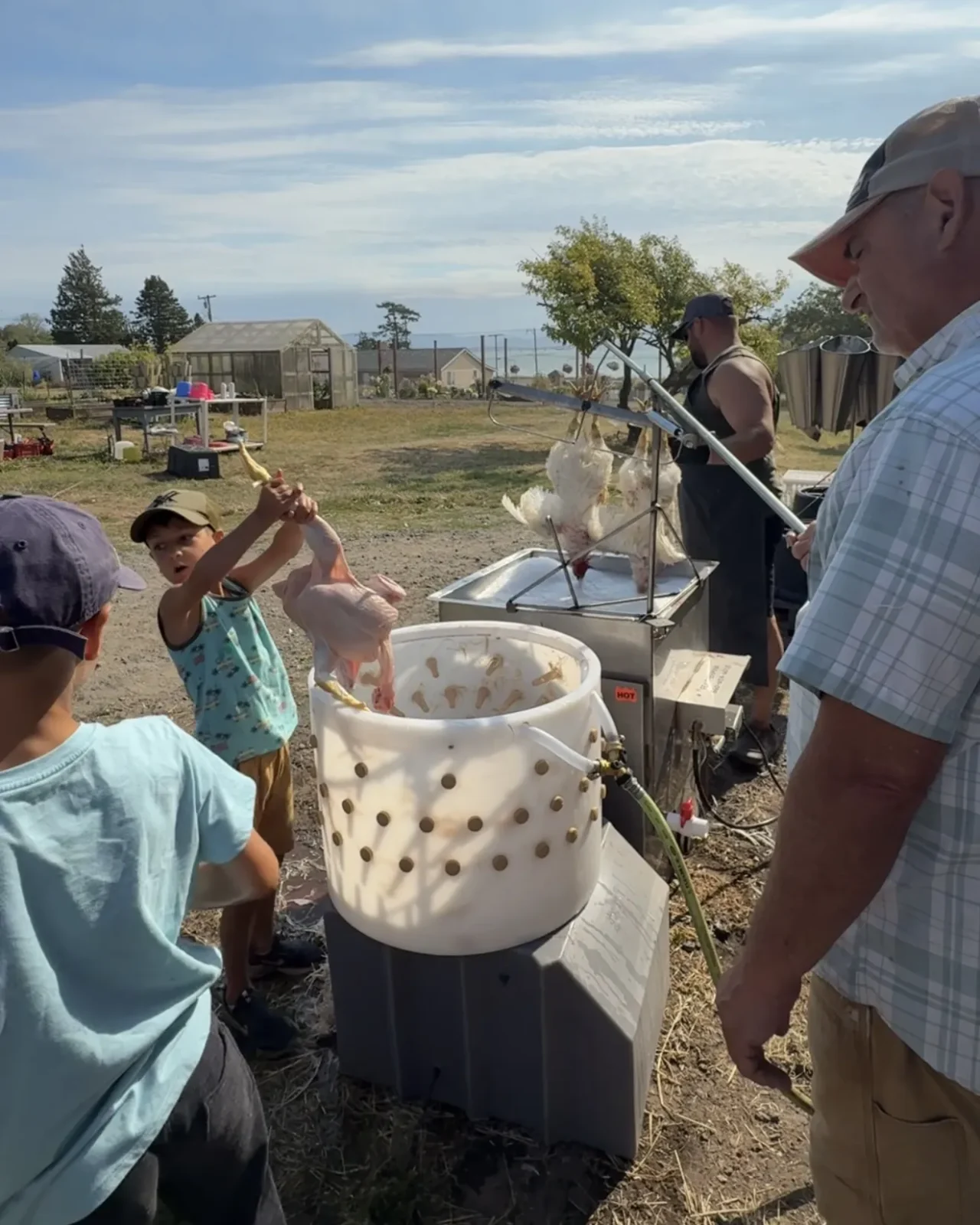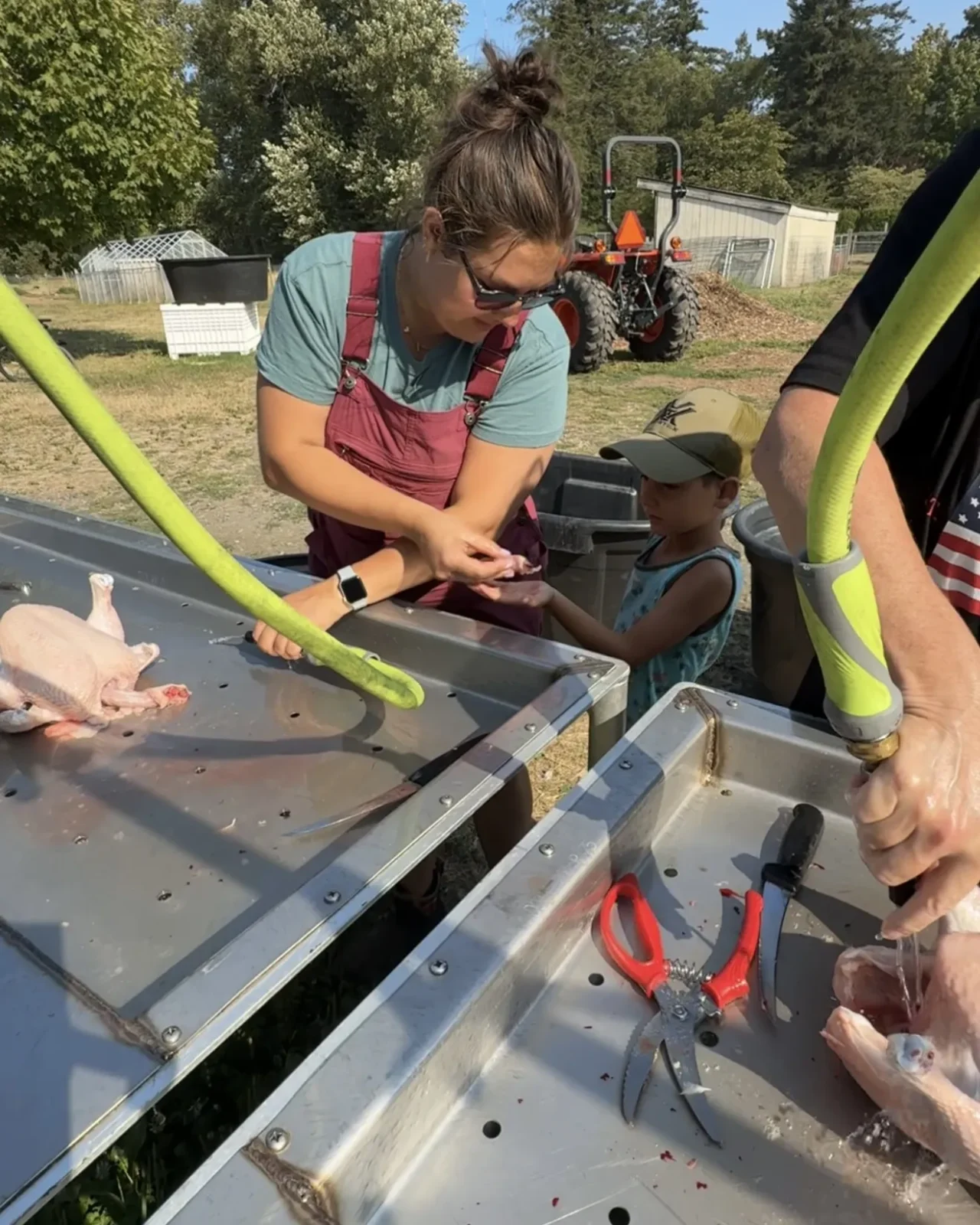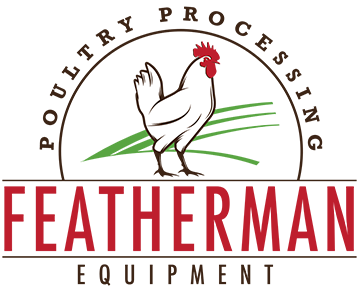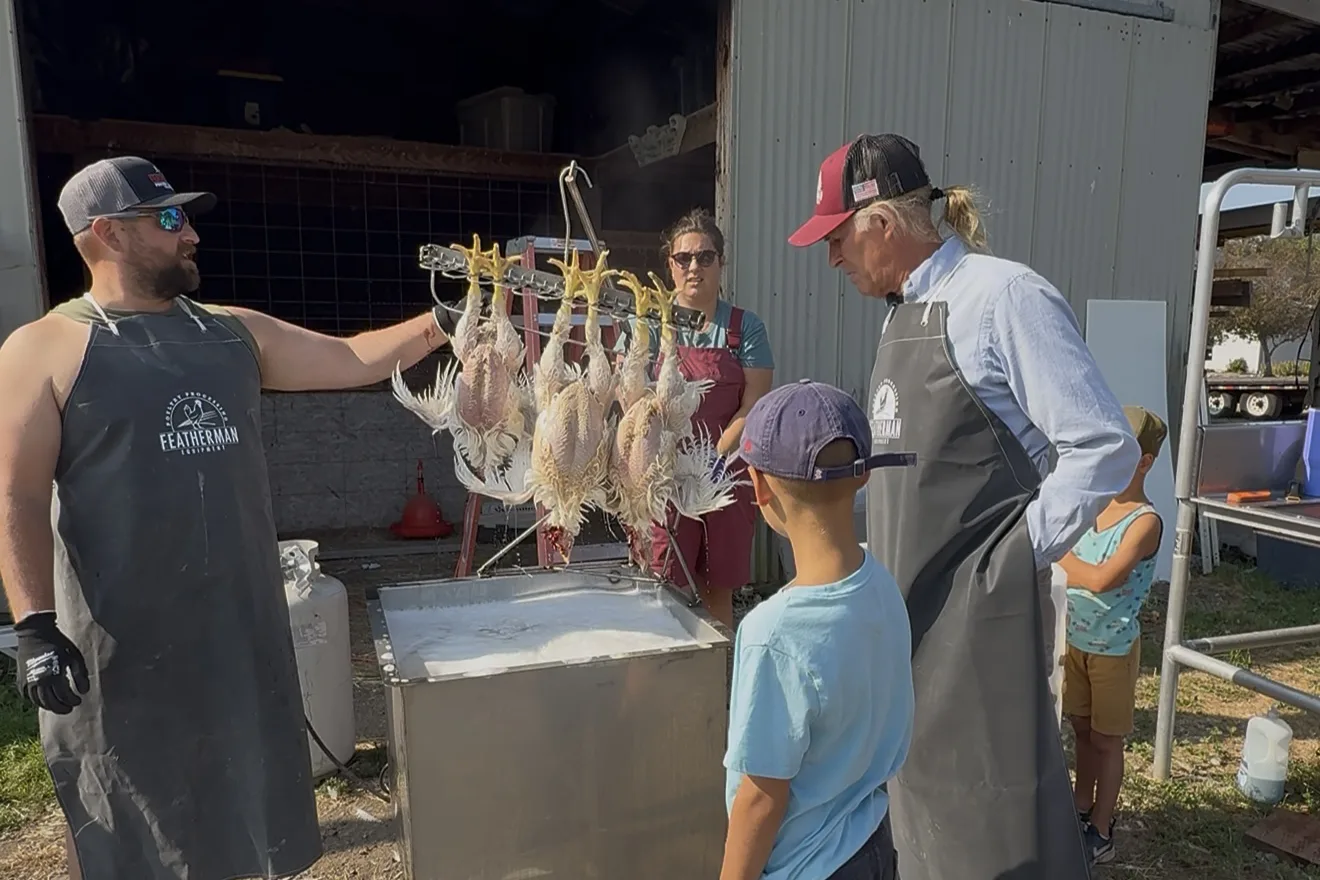How To
Myth Busting Poultry Processing: Part 1
It’s gratifying to see so many people embracing poultry as a home enterprise—whether for nutrition, food security, kid-friendly chores, or simply the joy of keeping chickens. My personal favorite reasons? Building soil and the peaceful rhythm of morning and evening chores that bookend my day.
But with that rising popularity comes an explosion of misinformation around poultry processing. Here are a few myths that give me a pain in my gizzard.
Myth #1: Poultry Processing Is Difficult
I used to believe this one myself—and it kept me from raising chickens for years. In my defense, you couldn’t buy a new plucker for under $3600 back then! (We’ll talk investment myths later.) For now, let’s dismantle the idea that processing chickens at home is hard.
Killing is the first hurdle. It’s not about perfecting the knife stroke—that part is quickly learned. It’s about ending a life, and our discomfort with that is a cultural disconnect. Yes, I’m judging—lovingly. We’ve lost touch with the reality that everything in nature consumes something else.
Television has raised generations to see animals with human faces and voices, tricking us into believing that harvesting a farm animal is murder. As my neighbor Dorris Grice would say: Horsefeathers! Raising your kids in the real world may be the single best reason to move to the country and raise chickens.
Scalding and plucking? No rocket science here—just hot water and a dunk. When feathers pull easily, it’s time to pluck. Once you hit that point, plucking is done in a flash.
Gutting? Okay, it can get messy if done wrong. But these days, there are so many solid videos online that there’s no excuse. Think of it as educational (kids love this part!), great survival prep, and a future story worth telling. That’s a stripe earned.


Myth #2: It’s Easier to Skin a Chicken Than Pluck It
Physically? Maybe. But I’m still calling this a myth because with the right technique, plucking poultry can be just as easy—and a lot more rewarding.
Skinning may seem faster, but you’re missing out on one of the best parts of the bird. The skin holds delicious, nutritious fat. It’s the magic ingredient in that age-old elixir: chicken soup! Skin-on birds are more flavorful, better-looking, and less wasteful.
Sure, decades of anti-fat marketing led to a surge in skinless chicken breast recipes. But I trust you know the difference between good fat and bad fat—and that factory-farmed chicken isn’t your standard. (That’s another myth for another time.) Bottom line: keep the skin, and keep the flavor.
Myth #3: I Can’t Afford Processing Equipment
Remember my $3,600 plucker? You can buy one new now for a tenth of that—or even better, rent a poultry plucker to start. Renting is the best move for beginners. You get access to quality equipment, build experience, and make some friends along the way. Once you’ve got a few birds under your belt, buying your own setup makes more sense.
→ Shop Featherman Pluckers here
But let’s flip this on its head: How can you afford not to process your own food? What’s the real cost of poor health, or cheap food filled with lower nutrition, added chemicals, and supporting systems that don’t prioritize animal welfare.
Home processing and raising your own food is the new counter-culture in an under-informed, overweight America. When your priorities are a healthy body and quick mind, you’ll start to understand the long-term value. Take charge, grow your own, and invest in tools that serve you well.
In Part 2, we’ll dig into a few more processing myths—like the fear of contamination, whether processing is legal in your area, and if birds taste “gamey” when home-processed.
What chicken myths get stuck in your craw?
– David Schafer
Want more homesteading and poultry processing tips?
Got a poultry processing myth you’d like us to bust? Send it our way!

